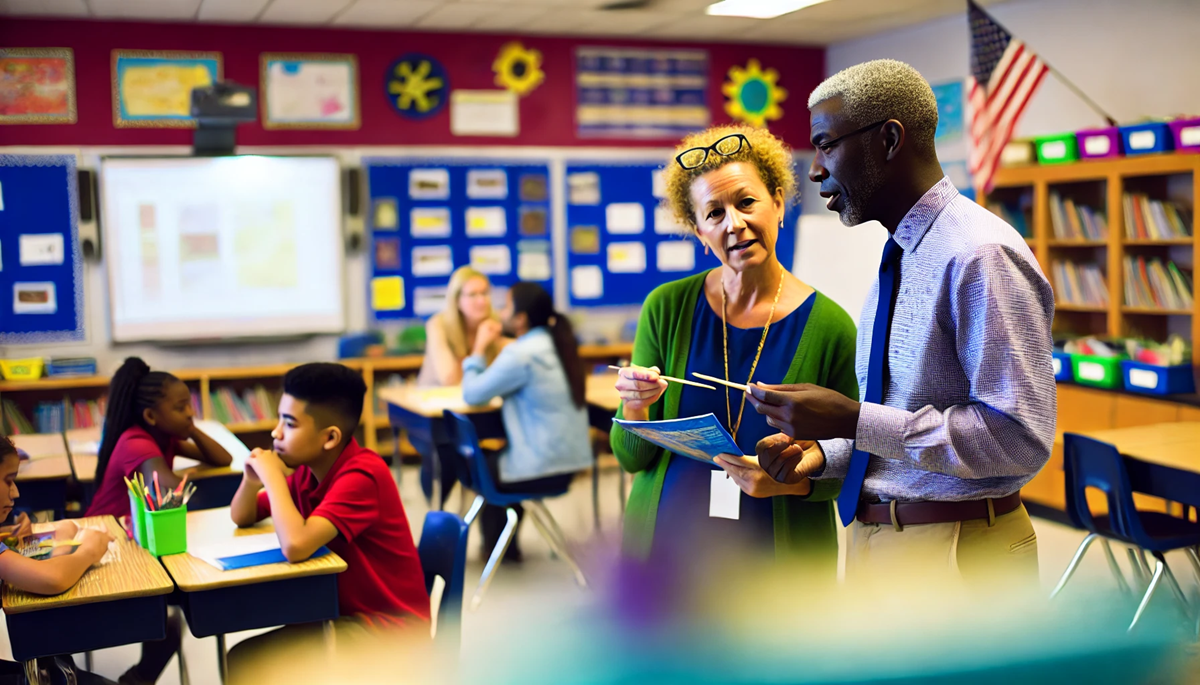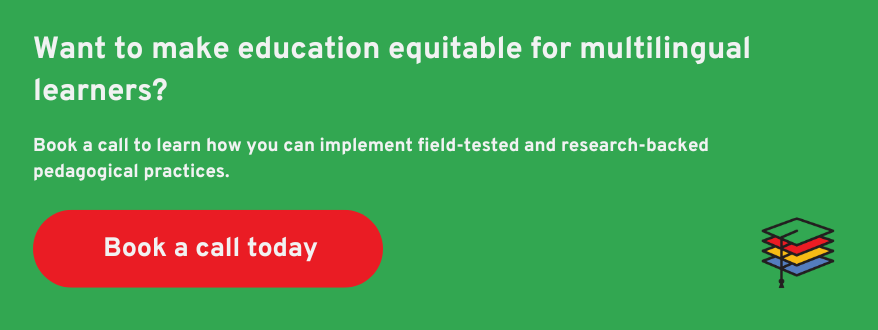With all of the competing priorities and responsibilities on a school leader’s plate, it is sometimes easy to lose sight of the most important work of a school: student learning.
Effective school leaders prioritize instructional leadership and make time to be in classrooms to observe teaching and learning.
Because every moment in the work day is extremely important, it’s important to ask some key questions about classroom walkthroughs to ensure the time is well-spent:
- First, what do we actually mean when we reference classroom walkthroughs?
- What is the purpose of the walkthroughs?
- Who is participating?
There are many reasons leaders spend time in classrooms, such as teacher observations, coaching, or culture support.
In this blog post, I am focusing specifically on how to leverage classroom walkthroughs in the school improvement process. However, I believe some of the recommendations and key practices ring true for all types of walkthroughs.
Here are a few key practices for how to utilize and leverage classroom walkthroughs to improve teaching and learning in schools:
Contents
- 1 Key Practice 1: Establish a clear purpose for walking through classrooms
- 2 Key Practice 2: Communicate about the purpose of the walkthroughs with your staff
- 3 Key Practice 3: Select, adapt, or create a tool that the group will use to achieve the purpose of the walkthrough
- 4 Key Practice 4: Keep the debrief focused on your purpose
- 5 Continue Learning About Classroom Walkthroughs
Key Practice 1: Establish a clear purpose for walking through classrooms
At Ensemble Learning we use classroom walkthroughs in two main ways:
1) Walkthroughs to understand the current instructional situation: We walk through classrooms to get a strong sense of the current instructional practices at a school.
This enables any improvement planning to be grounded in evidence from classrooms, leverage current strengths, and be within a reasonable development zone based on teachers’ current practice.
By observing what students are doing and saying in the classroom, we can also gather qualitative data on the strengths and needs of students and plan improvement efforts accordingly.
2) Walkthroughs to monitor the implementation of instructional shifts: Ensemble hosts “accountability event” walkthroughs as a way for schools to receive critical friends’ feedback about the new instructional practices they are developing.
We facilitate these walkthroughs a few months into the implementation of an improvement plan to help school leaders check if desired shifts have been put in place and how they are impacting student learning. We gather other school leaders and teachers to walk classrooms and provide feedback from their fresh perspective.
These “accountability events” have been instrumental in supporting schools to ensure improvement efforts are achieving the desired results.
There are many other reasons to do classroom walkthroughs beyond these two, such as instructional coaching, pulse checks on implementation of new initiatives, or to get a sense of the overall school culture.
No matter what the purpose, make sure to be explicit about the purpose so that all participants can remain focused.
Key Practice 2: Communicate about the purpose of the walkthroughs with your staff
It is imperative to communicate the purpose of your walkthroughs to staff to create an inclusive and collaborative culture.
Without clear communication, teachers may feel like walkthroughs are a “dog and pony show” or a “gotcha” experience, and you will not be able to gather authentic learning data. By increasing transparency about your school improvement efforts, you can get staff all focused on the same goals.
Depending on where you are in your improvement efforts, you should also consider communication with students. Recently, we did an “accountability event” walkthrough at a network of schools.
While the staff were incredibly engaged about their improvement work to increase student academic discourse, students did not even seem aware that academic discourse was a focus area of the network.
In our debrief, we discussed the importance of bringing the students on board with the improvement efforts, and the school leader implemented a plan to communicate with students as well as increase students’ tools for academic discourse self-assessment.

Key Practice 3: Select, adapt, or create a tool that the group will use to achieve the purpose of the walkthrough
All educators enter a classroom with his/her own biases that are shaped by knowledge, experience, and skills.
While this is wonderful in many ways, as it ensures we have multiple perspectives as we walkthrough classrooms, but it can also make a walkthrough disjointed and unfocused. Based on the purpose for walking through classrooms, select, adapt, or create a tool that will ensure your walkthrough team is focused on the right stuff.
For example, I recently participated in an excellently facilitated walkthrough. The school leader wanted critical friends’ feedback about work the school was doing to implement language objectives and plan aligned learning activities.
The leader created a simple but effective tool that had walkthrough participants gather quantitative data about the presence of language objectives in a classroom (essentially a “yes” or “no”), and qualitative data about the learning activity. This tool led to a rich discussion that helped the leader identify:
- Teachers and teacher teams who were “early adopters” and could be leveraged to lead peers. It was difficult for the leader alone to see patterns of strength in teacher teams.
- School-wide misconceptions about language objectives that could be addressed through professional learning. Again, it was hard for the leader to notice the patterns across the campus without the critical friends’ feedback.
- Teachers who were struggling and in need of one-on-one coaching.
Recently, schools in our Learning While Leading program did walkthroughs to understand the current situation of English learner instruction.
Because of this focus on English learners, we provided a tool adapted from Common Core Standards in Diverse Classrooms (Zweirs, O’Hara, Pritchard) that focused walkthrough participants on various dimensions of building academic language.
This tool enabled leaders to both gather evidence and self-assess on the level of implementation of these instructional strategies. A small sample is below:

Key Practice 4: Keep the debrief focused on your purpose
As you begin the debrief, review the purpose for the visits and the desired outcomes.
At our Ensemble “accountability events” walkthroughs, we share in a circle to give everyone an opportunity to participate and an equal voice. We establish rounds for sharing to ensure we have an opportunity to identify strengths to build on as well as areas of growth to address. At the end of the debrief, we always ask the hosting leader to share what she heard, what resonated with her, and what she will do next.
Another sharing option is to provide poster paper or a shared online document so the debrief is transparent.
Participants share out strengths and areas of growth in order to paint a full picture of the current instructional practices at the site.

In both types of walkthrough debriefs, it is important to put evidence and data at the center of the debrief by referring back to the tool that you used and challenging participants to be evidence-based in any claims or statements they make.
Continue Learning About Classroom Walkthroughs
A book that has been instrumental in developing our approach to classroom walkthroughs is Instructional Rounds in Education by City, Elmore, Fiarman, and Teitel (Harvard Education Press).
If you are interested in partnering with Ensemble learning to facilitate walkthroughs at your school or as part of a cohort of schools working on similar improvement efforts, visit our website at www.ensemblelearning.org or reach out to Elise Darwish, CEO of Ensemble Learning at edarwish@ensemblelearning.org.






